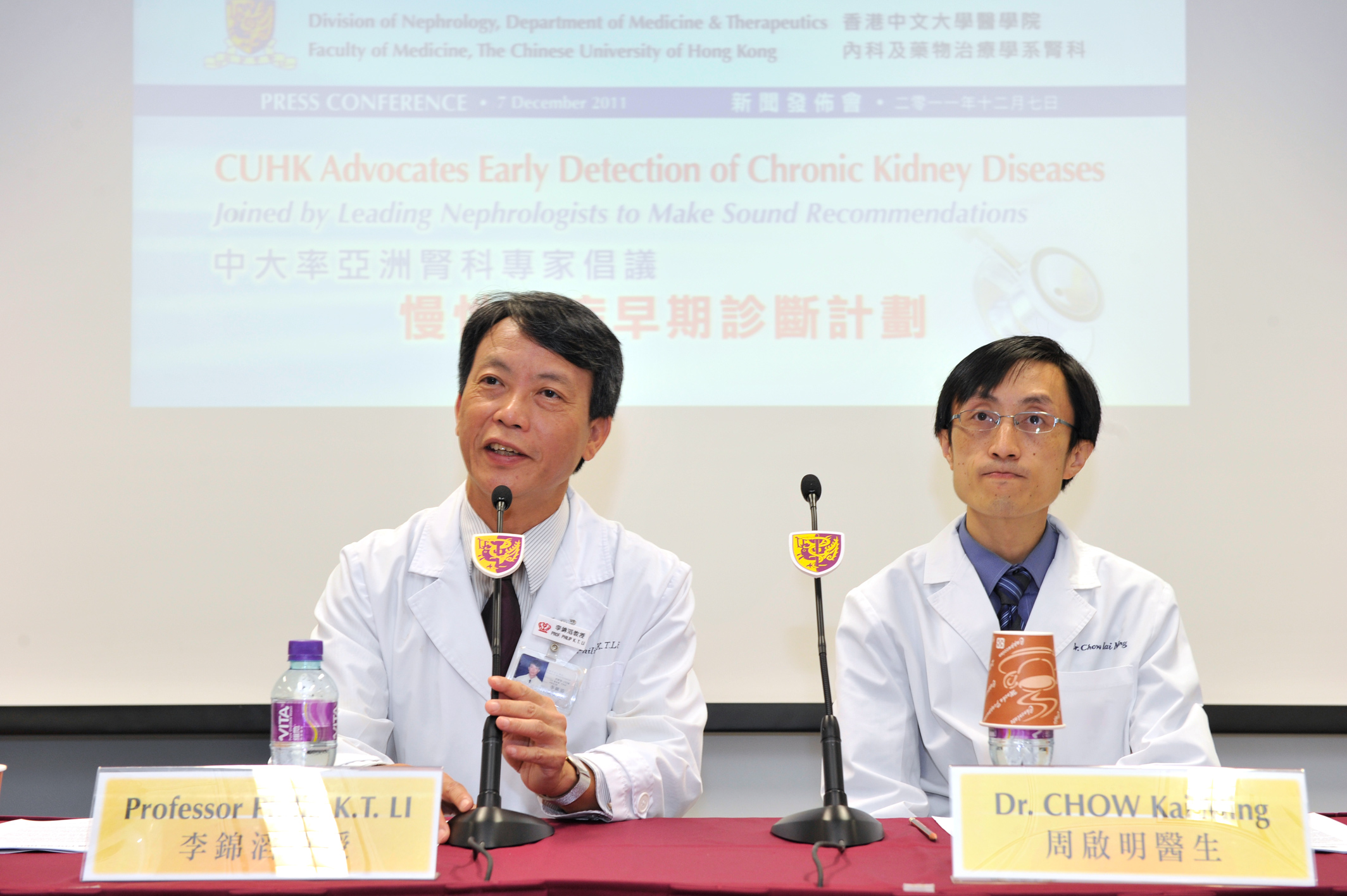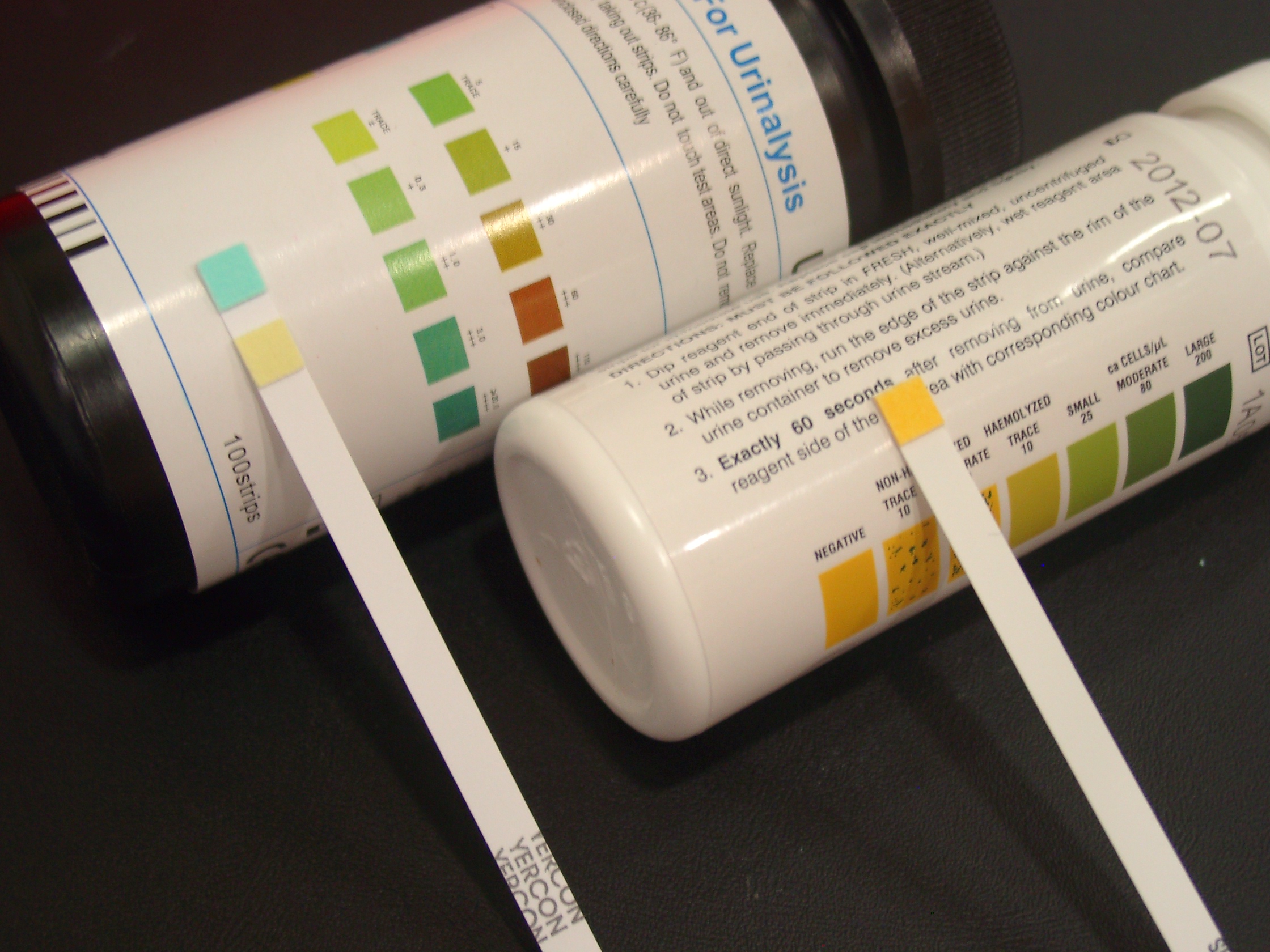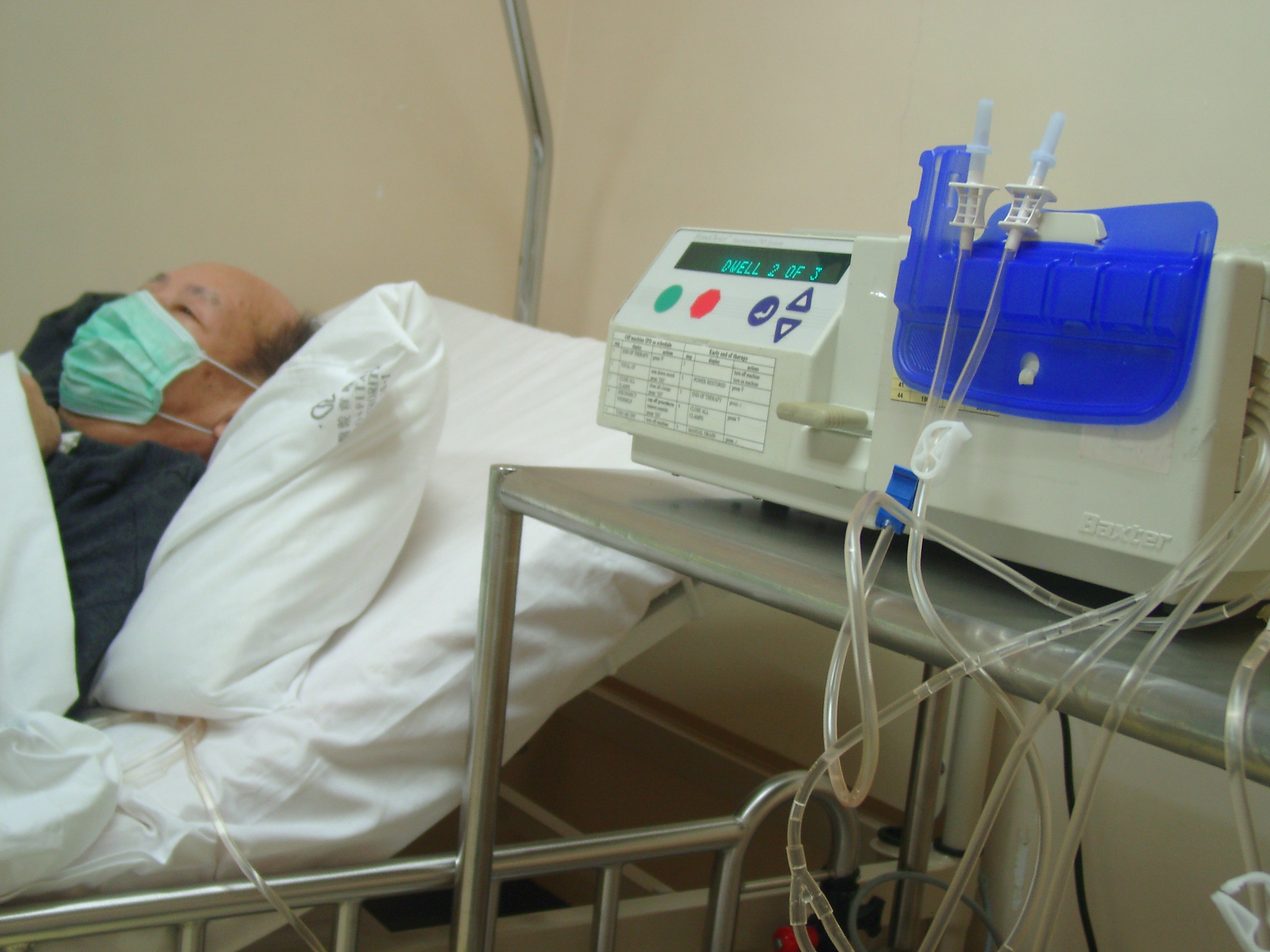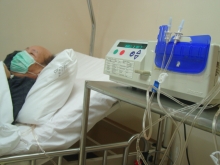CUHK
News Centre
CUHK Advocates Early Detection of Chronic Kidney Diseases; Joined by Leading Nephrologists to Make Sound Recommendations
Professor Philip K.T. Li, Head of Division of Nephrology and Honorary Professor, and Dr. K.M. Chow, Honorary Clinical Associate Professor, Department of Medicine and Therapeutics at The Chinese University of Hong Kong (CUHK), have led a group of leading nephrologists, many as presidents of societies of Nephrology in their countries in Asia and Asia Pacific, to make recommendations on early detection of chronic kidney diseases (CKD). These recommendations were recently published in Nephrology (Issue No. 16, 2011), an official journal of the Asian Pacific Society of Nephrology.
CKD are classified into 5 stages according to the severity of loss of kidney function: the better the kidney function, the lower the stage of CKD (CKD stage 1 represents comparatively the best kidney function while CKD stage 5 represents kidney failure). In Asia, about 12 to 16% of the population suffer from different stages of CKD. End stage renal failure is also on a rising trend. In Hong Kong, 33% of people aged over 60 suffer hypertension or urine abnormalities (protein, blood or glucose), which are risk factors of developing CKD, compared with 24% and 9.7% in the 41-60 age group and the 20-40 age group respectively.
In 2010, there were 7,372 reported cases of end stage renal failure in which dialysis or kidney transplantation is needed, as reported by the Hospital Authority in Hong Kong. There were 134 new cases (incidence) of end stage renal failure per million populations. The three commonest causes of end stage renal failure leading to dialysis are diabetes mellitus (46.2%), nephritis (20.2%) and hypertension (9.7%). CKD poses great burden on patients and on the community. Early detection and prevention of progression of renal disease is crucial to reduce the number of patients who may reach the end stage.
Professor Philip K.T. Li and Dr. K.M. Chow advocate the early detection programme of CKD, together with opinion leaders of the related field in Asia, to provide useful information to international health organizations and professional societies in the overall strategies of early detection and prevention of CKD. The recommendations indicate the high risk population and tools to identify CKD patients, as well as treatment for patients diagnosed with CKD.
Target population
- Patients with diabetes and hypertension
- Those with family history of CKD
- Individuals receiving potentially nephrotoxic drugs, herbs or substances or taking indigenous medicine
- Patients with past history of acute kidney injury
- Individuals older than 65 years
Tools
- Spot urine sample for protein with standard urine Dipstick test (need a repeat confirmatory test if positive)
- Dipstick for red blood cells (need confirmation by urine microscopy)
- An estimate of glomerular filtration rate based on serum creatinine concentration
Intervention after screening
- Patients detected to have CKD should be referred to primary care physicians with experience in the management of kidney disease for follow up. A management protocol should be provided to the primary care physicians. Further referral to nephrologists for management will be based on the protocol together with clinical judgment of the primary care physicians with their assessment of the severity of CKD and the likelihood of progression.
In conclusion, CUHK advocates early detection and surveillance of CKD as well as increasing awareness of the general public towards the disease in order to reduce its prevalence.
From left: Professor Philip LI, Head of Division of Nephrology and Honorary Professor, and Dr. CHOW Kai Ming, Honorary Clinical Associate Professor, Department of Medicine and Therapeutics, CUHK, have led a group of leading nephrologists in Asia and Asia Pacific, to make recommendations on early detection of chronic kidney diseases.







